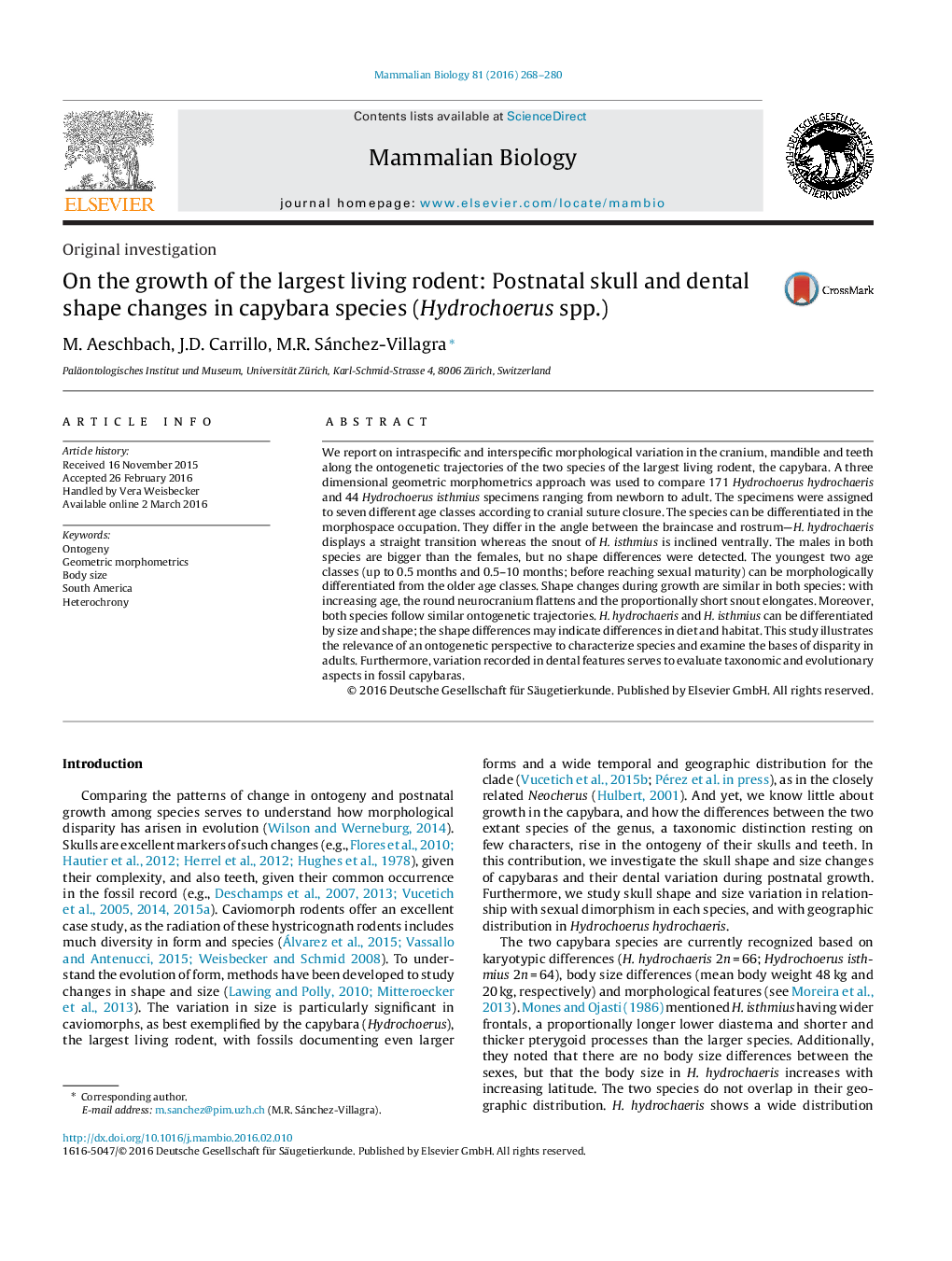| Article ID | Journal | Published Year | Pages | File Type |
|---|---|---|---|---|
| 2193275 | Mammalian Biology - Zeitschrift für Säugetierkunde | 2016 | 13 Pages |
We report on intraspecific and interspecific morphological variation in the cranium, mandible and teeth along the ontogenetic trajectories of the two species of the largest living rodent, the capybara. A three dimensional geometric morphometrics approach was used to compare 171 Hydrochoerus hydrochaeris and 44 Hydrochoerus isthmius specimens ranging from newborn to adult. The specimens were assigned to seven different age classes according to cranial suture closure. The species can be differentiated in the morphospace occupation. They differ in the angle between the braincase and rostrum—H. hydrochaeris displays a straight transition whereas the snout of H. isthmius is inclined ventrally. The males in both species are bigger than the females, but no shape differences were detected. The youngest two age classes (up to 0.5 months and 0.5–10 months; before reaching sexual maturity) can be morphologically differentiated from the older age classes. Shape changes during growth are similar in both species: with increasing age, the round neurocranium flattens and the proportionally short snout elongates. Moreover, both species follow similar ontogenetic trajectories. H. hydrochaeris and H. isthmius can be differentiated by size and shape; the shape differences may indicate differences in diet and habitat. This study illustrates the relevance of an ontogenetic perspective to characterize species and examine the bases of disparity in adults. Furthermore, variation recorded in dental features serves to evaluate taxonomic and evolutionary aspects in fossil capybaras.
